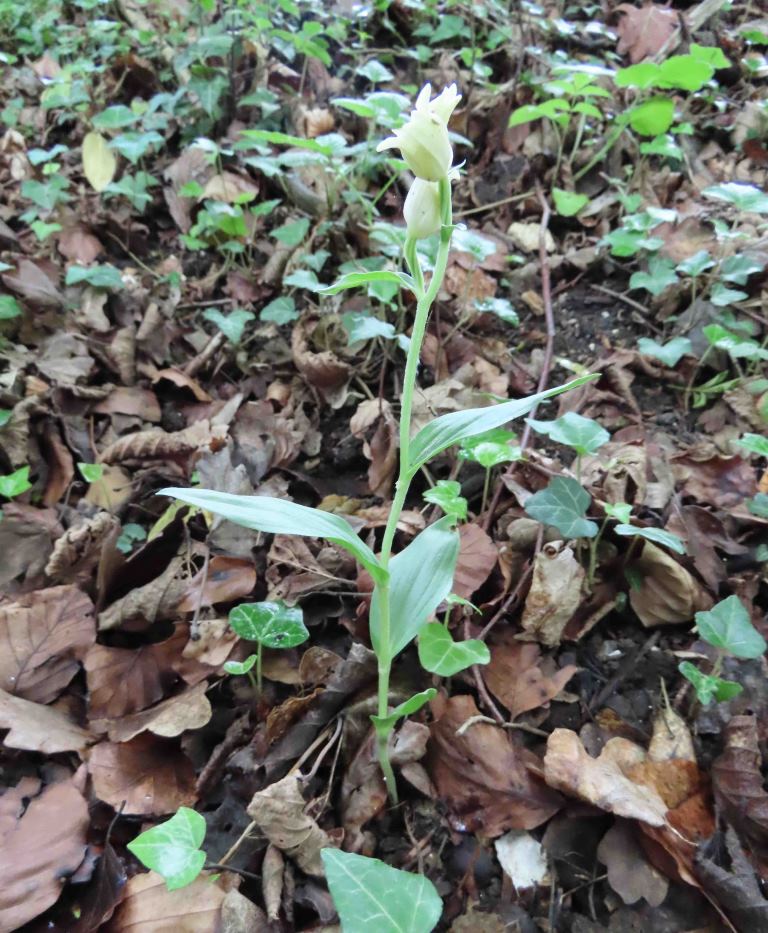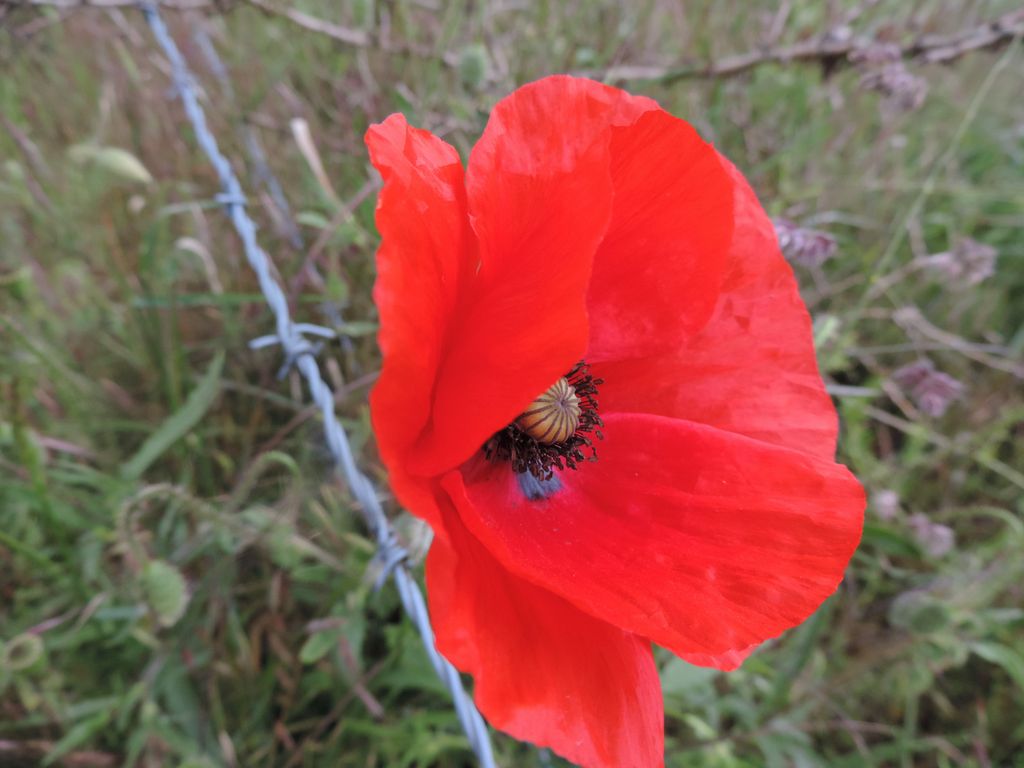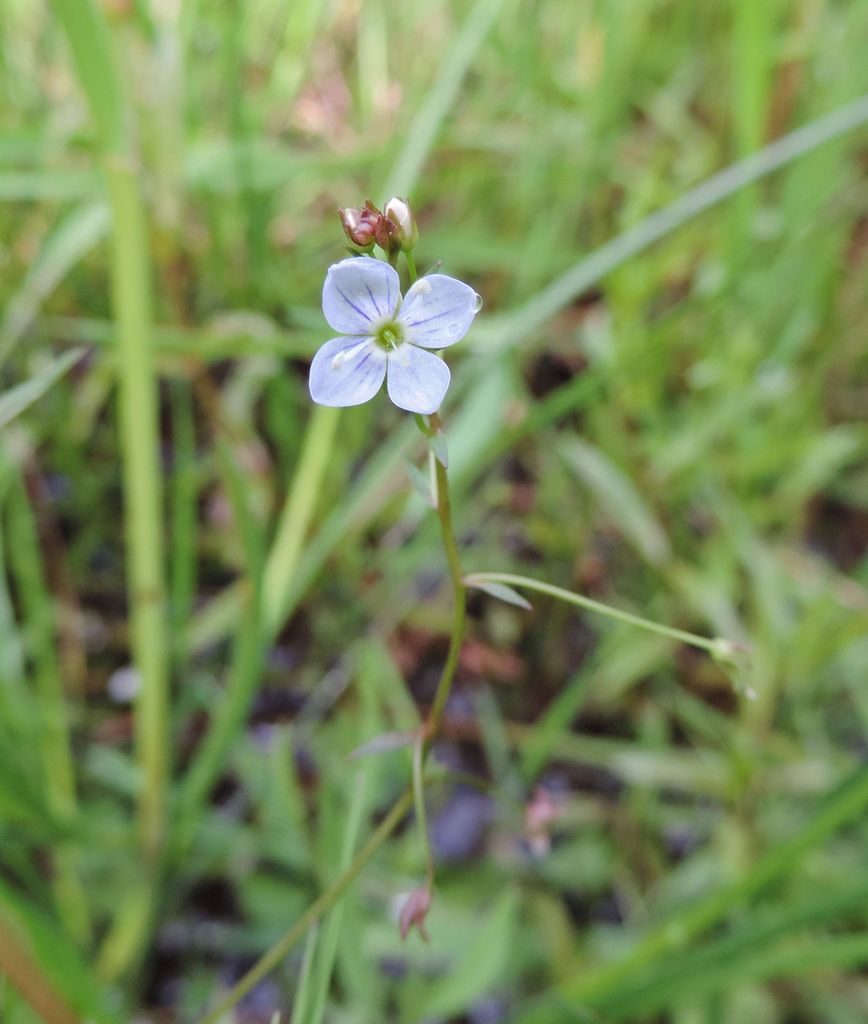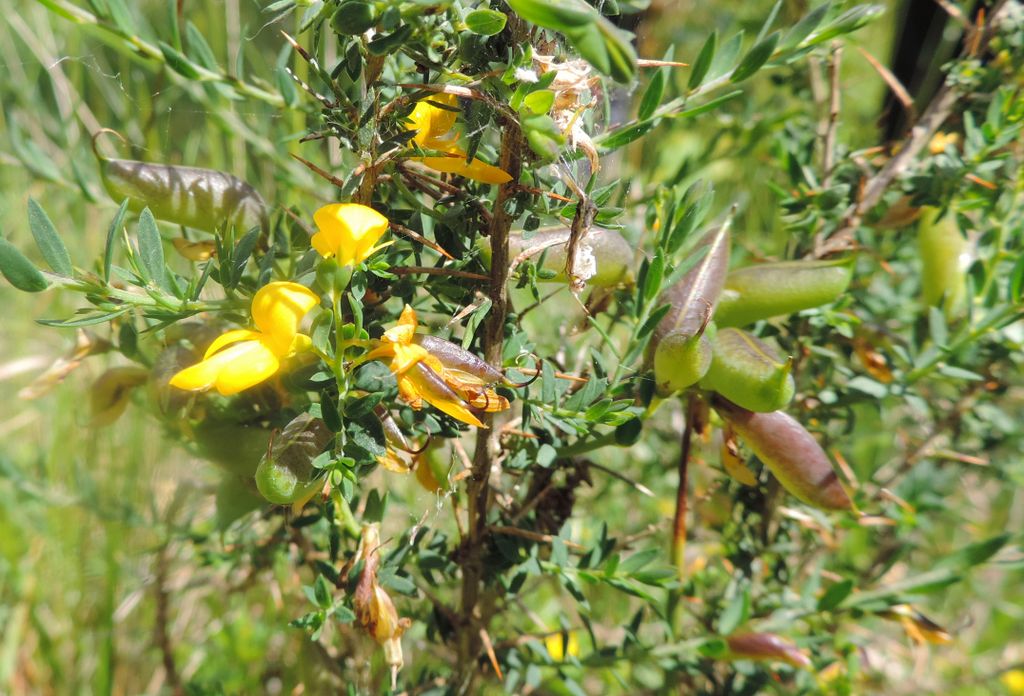Jim Wills led a circular walk which started at Frieth on Wednesday 8 June. The morning started cloudy, but the sun soon came out and it was pleasantly warm, but becoming windier as the walk progressed. The walk started out northwards from the village, initially past a recently-planted orchard. There was abundant Yellow Rattle in the grass below the trees, together with Dame’s Violet and Red Campion beside the path. The route followed footpaths along hedgerows and into the edge of a wood, before turning right through a gateway and down across a field with fine grasses, dotted with Red and White Clover. At the bottom of the field, the footpath crossed a deep wooded sunken lane. Five White Helleborine flower spikes were found beneath Beech trees on the bank. The walk continued uphill along the edge of a wood, where Field Rose with white flowers was scrambling through the hedgerow. The footpath then followed the boundary between two fields, where sightings included Bladder Campion, Common Poppy and Ox-eye Daisy. The next part of the walk was through Fining Wood, where the underlying geology changed from the Chalk of the farmland to the Clays and Sands of the over-lying Lambeth Beds. On the left of the path, Rough Chervil was growing next to Cow Parsley. A damp stretch of ground had Brooklime and Common Figwort, while further on, Yellow Pimpernel was found. Turning back southwards, the next footpath led out of the woodland and back onto farmland on the Chalk. Skylarks sang overhead, a Yellowhammer sang from the hedge and a Kestrel was seen. The path ran past a house with a green stonecrop-covered roof. Its large pond had attracted a few Swallows and House Martins.
Next stop was the northern section of Moorend Common. The underlying geology is London Clay, which is rarely found in the Buckinghamshire Chilterns. The meadow was covered by a glorious mix of Southern Marsh-orchid, Common Spotted-orchid and Heath Spotted-orchid, together with a bewildering mix of hybrids between them. Jim had helpfully provided a crib-sheet describing key features of the three species which could be used to try to work out the lineage of different specimens. The crib-sheet described the leaf markings and the colour, shape and patterning of the flowers. Also found here were Bitter-vetch and the leaves of Devil’s-bit Scabious. Moths seen included Burnet Companion and Green Oak Tortrix, and a Marsh Fritillary butterfly was roosting in the grass with its wings together – was this yet another unofficial release of this species? The central part of Moorend Common is wooded. Many of the leaves showed signs of feeding damage but there were no obvious caterpillar culprits. It was suggested that the first generation of the Alder Leaf-beetle might have been responsible. The southern section of the Common was another glorious orchid-covered meadow. There appeared to be more Common Spotted-orchids than Heath Spotted-orchids – on the northern meadow, the opposite had been the case. A wetter part of the meadow had Ragged-robin, Lousewort, Marsh Speedwell and Common Marsh-bedstraw. In the centre of the meadow were a number of clumps of Petty Whin. Most had finished flowering, but there were a few remaining yellow flowers. Leaves of Betony, Devil’s-bit Scabious, Sneezewort and Common Fleabane were identified. Fen Bedstraw was found on the drier side of the meadow. Meadow Brown, Small Heath and Speckled Wood butterflies were seen, together with Straw Dot and Silver Y moths. The final part of the walk, in a strengthening wind, was along footpaths across fields and back to Frieth churchyard. Most of the group then went on to the Frog pub at Skirmett for lunch.






Pictures by Rob Stallard and Fiona Brown
